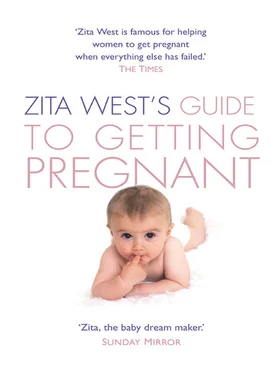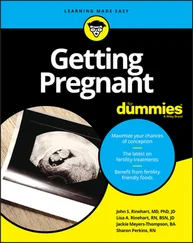Up until puberty, the egg cells lie dormant in the ovaries, waiting for a shift in the hormonal patterns of a girl’s body to ‘switch on’ her fertility. At what age this starts is largely influenced by genetics – if your mother started her periods early, then it’s likely you will have done, too. Starting menstrual periods is the marker of the beginning of a woman’s fertility, and is known as menarche .
In Western countries, the average age of menarche is between 12 and 14, but can be as early as 10 and as late as 16. All are completely normal. Ovulation can occur before the first period, but a girl’s early menstrual cycles can be erratic, and often without ovulation. Over the next few months, or sometimes longer, the pattern of cycles settles down to what is normal for that girl, as regular ovulation establishes itself.
If you think back to GCSE biology, you will remember the term ‘secondary sex characteristics’, which are the outward, visible signs of puberty and the onset of a woman’s fertile life. In a woman, increasing levels of FSH (follicle – stimulating hormone) and LH (luteinizing hormone) and the beginnings of oestrogen and progesterone production lead to the development of breast tissue, pubic and underarm hair, and a different distribution of body fat, all of which are designed to create a body capable of nourishing a growing baby, both before and after birth. These changes begin before the first menstrual period occurs, and can happen slowly over a couple of years, or relatively quickly. Again, this depends in part on genetics, and a mother’s experience of puberty will give some insight into what her daughter might expect.
Remember how you were warned in your sex education classes at school that sex inevitably led to pregnancy? Remember, too, all the efforts you took in the past not to get pregnant, not to mention all those false alarms? So it may feel a bit of a mystery as to why getting pregnant is now so elusive. This chapter is designed to help you understand your own fertility cycle, and how to work with it to achieve pregnancy.
Understanding Your Own Fertility
With so much misinformation about how, where, why and when, it’s always best to start with the basics. Once you are informed and familiar with your own body’s fertility indicators, you will feel more confident about managing to get pregnant.
And there is a lot of confusion out there! According to research carried out by Unipath (who produce Persona – the personal hormone-monitoring system), while 92 per cent of women accurately described ovulation, a third of them thought it occurred during a period! Out of six European countries covered in the research, the UK women surveyed had the worst knowledge of when their fertile days were: 21 per cent thought they were fertile for more than 21 days a month. And while 72 per cent of women knew that the fertile time was mid – cycle, one – third thought it possible to get pregnant at any time during their cycle.
It is essential to remember that every woman is different . Although the basic principles remain the same, what is true of your friend is unlikely to be true of you – from your cycle length to how your body indicates its fertility, to how you react physically and emotionally. This is why it is so useful to understand your own fertility.
Most women seldom think about their fertility, or menstrual cycles, but most women – when they do stop and think about it – are aware of cyclical changes to their skin, appetite, mood – all of which are indicators of their individual cycle.
Most of us have learned to live with certain symptoms in our cycle, but it’s also important to remember that our fertility cycle is controlled by the pituitary gland, located deep within the brain and influenced by all activity there. Hormones, which are chemical messengers, are primarily controlled by the brain’s activity – it’s like a constant conversation that occurs between the hormones of the brain and the ovaries, sending messages back and forth (see page 8).
The pituitary gland is often referred to as the ‘master gland’ of the body, because it secretes at least nine major hormones designed to stimulate the ovaries, adrenals and thyroid, amongst others (including the testes in men), which all have a role to play in fertility. When we are producing the right amount and blend of hormones, we feel fine. When there is an imbalance, these chemical messengers can make us feel pretty lousy. We talk about having ‘hormones from hell’ when we, as women, feel imbalanced at certain times of the month. PMS is a clear indicator that hormones are out of balance. The hormones are doing their job, and the body is reacting as it should, but because the balance is out, then the effects are negative.
Each of the fertility signals that you observe when you begin to chart your own fertility corresponds to a hormonal process and the presence of hormones in your bloodstream. The hormones oestrogen and progesterone are particularly important, and both affect the body in a number of ways that are easy to note.
The menstrual cycle is a constantly changing hormonal environment, but oestrogen influences the first part of the cycle – up to ovulation – and then progesterone exerts its influence. Some women would probably prefer not to be so influenced by the ups and downs that a cycle brings, but these changing hormonal events will help you to know when your chances of conceiving are best.
Few women have a 28-day cycle, but we can say that the average length is around 28 days. For some women their normal cycle can be short (around 25 days) or long (around 35 days). Provided there is a regular pattern, this is normal for you, and you can be relatively sure that ovulation is occurring. It is when cycle length fluctuates from 25 days one month to 30 another, or 42 another, that ovulation is likely to be haphazard, or even non – existent during some cycles.
The fertility, or menstrual, cycle starts on the first day of menstruation or a ‘period’. Sometimes on medical forms women are asked to give the date of their ‘last menstrual period’ or ‘LMP’ – this would be the date on which you started to bleed.
Oestrogens are the dominant hormones during the first part of the cycle – the time before ovulation, also known as the follicular phase (see page 8) – while progesterone takes over during what is known as the luteal phase (see page 31) and also during pregnancy, should conception occur. Your cervical secretions are linked to oestrogen secretion, and can give a good indication of the availability of oestrogen.
Menstruation, or a ‘period’, is the bleeding with which every woman is familiar. It heralds the end of one cycle and the beginning of another. The hormones responsible for the activity of ovulation and womb – preparation effectively ‘take a break’ at this stage, in order to activate the next cycle. Many women are quite susceptible to the effects of this hormonal switch.
Women often ask me what’s ‘normal’ for a period: how long it should last and how much blood should be lost. The average period lasts for between 3 and 5 days, and the total blood loss is between 30 and 80 ml (6 to 16 teaspoons). However, this is only the average; each woman’s experience of her period will be unique to her. Some women seem to have a lot of abdominal cramping (caused by contractions in the womb) when they have a period, or back pain, while others have none. For some, the bleeding happens in a flood at the beginning, while for others it’s a slow, continuous bleed.
Hormones and the Phases of Your Cycle
A question I get asked all the time is, ‘How do I know if my hormones are balanced?’ Hormone balance is such an important part of a woman’s fertility, and so easily influenced by poor diet, stress, lack of sleep and environmental factors, that assessing a woman’s hormone levels – and addressing any rebalancing that needs to be done to help her achieve optimum fertility – are important aspects of the work I do. And although there are sometimes quite clear indicators of hormone imbalance, often a bit of detective work is needed.
Читать дальше












